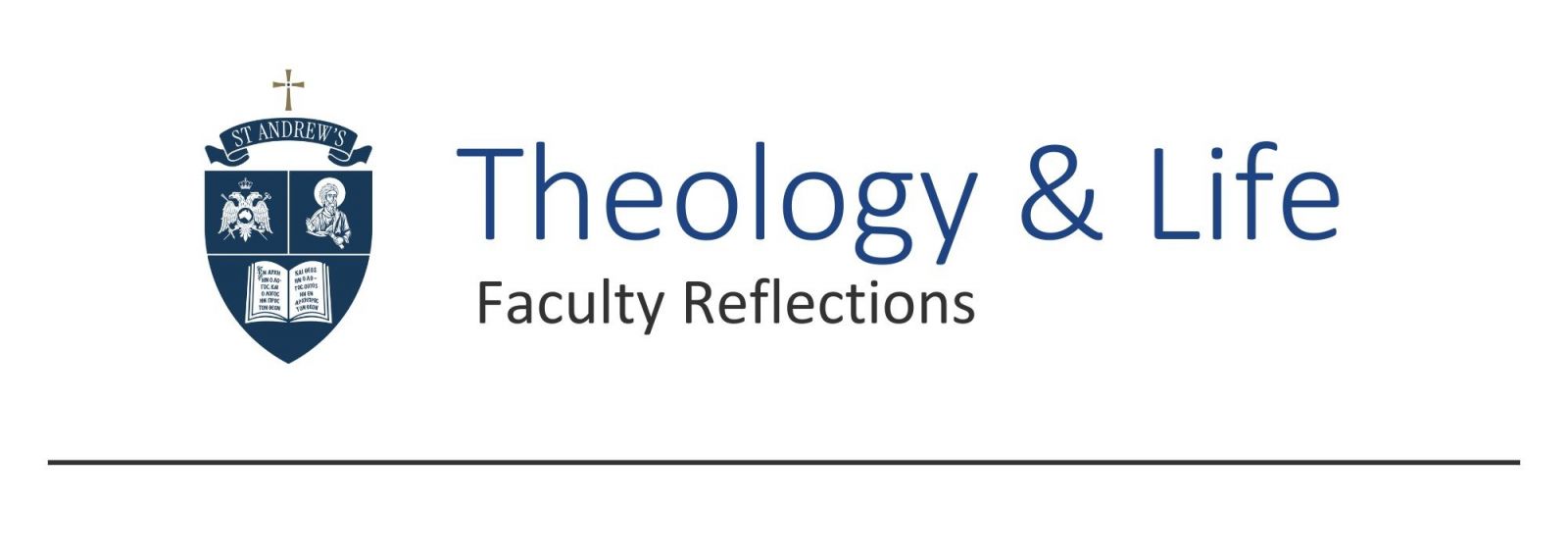- Home
- About us
- Students
- Courses
- Research
- Library
- News & Events
- Gallery
- Contact
- Our Blog
Latest News

The Presentation of the Lord:
A Brief Theological Reflection
![]()
by Assoc. Professor Philip Kariatlis (Sub-Dean)
The Presentation of the Lord, also known as the Feast of Hypapante [Ὑπαπαντή], is a significant event in the Christian tradition, commemorating the moment when the infant Jesus was brought into the Temple in Jerusalem by His mother, Mary and Joseph, in accordance with Jewish law. The term Hypapante means “reception”, signifying the encounter between the Messiah with both the righteous Simeon and the prophetess Anna in the Temple—both of whom had been waiting for this moment for their entire lives. Dating back to the early centuries of the Church, the commemoration of this feast in the Eastern Orthodox tradition is considered one of the Twelve Great Feasts, whilst, in the Western Church, it is also known as Candlemas, marked by the blessing of candles as a symbol of Christ as the “Light of the World” (John 8:12).
Essentially, as we shall see, the feast is inviting the faithful, throughout the ages, to come on this day, and to take a glimpse into the heavenly realm which opens up before the world for the sake of its salvation. After hearing the Church’s exhortation in the Vesperal Doxastikon, “Let the gates of heaven open today [Ἀνοιγέσθωἡπύλητοῦοὐρανοῦσήμερον]”[1], we are urged to “receive [Christ] whose salvation was seen by Simeon [δεξώμεθααὐτόν, οὗτὸσωτήριονὁΣυμεὼνἑώρακεν]”[2] and give thanks and glory for God’s incredible and boundless benefactions upon the world.
Biblical and Theological Context
According to the Gospel according of St Luke (Lk 2:2-40), forty days after the birth of Jesus, Mary and Joseph took the infant to the Temple, in fulfillment of the Mosaic Law. This law required the presentation of every first-born male child to God, as stated: “Every firstborn male who opens the womb shall be designated as holy to the Lord” (Luke 2:23; cf. Exodus 13:2). Additionally, Mary underwent the prescribed purification rite, a custom rooted in Jewish tradition. In the Old Testament, the dedication of the first-born was an expression of gratitude for God’s deliverance of Israel’s children during the Exodus (Exodus 13:15). Subsequently, in the Christian tradition, Christ’s presentation in the Temple would come to be understood as an event foreshadowing our Lord’s ultimate sacrifice and reinforcing the theme of His life being offered for the salvation of all humanity.
Central to this event of Christ’s ‘presentation’ into the Temple is the figure of Simeon, described in the Gospel as a righteous and devout man who had received a revelation from the Holy Spirit that he would not die before seeing the Messiah. Upon seeing the infant Jesus, Simeon took Him in his arms and uttered the hymn:
“Master, now you are dismissing your servant in peace, according to your word; for my eyes have seen your salvation, which you have prepared in the presence of all peoples, a light for revelation to the Gentiles and for glory to your people Israel.”(Luke 2:29-32)
Inspired by the Holy Spirit, Simeon’s pronouncement acknowledges the infant child Jesus as the fulfillment of all of God’s promises—indeed, a promise intended not only for Israel but for all humanity. Here, Simeon’s recognition of Christ as the divine Redeemer affirms the universal scope of salvation, highlighting the significance of this moment for all the world beyond its immediate cultural and religious context at that time. To be sure, Simeon’s words foreshadowed Christ’s Great Commission to “go and make disciples of all nations” (Mt 28:19) and were a precursor to the apostle Paul’s universal mission to preach the Gospel to the Gentiles. Having experienced the fulfilment of God’s promises in his life, we are told that the righteous Simeon was ready to die in peace, that is, to enter “into the life filled with wonder that knows no age or end [πρὸςτὴνἀγήρωκαὶθαυμασίανἄληκτονζωήν].”[3]
Spiritual Reflection and Application
There are many aspects of this important feast day that are relevant for our own immediate present context, and can serve as helpful pointers in our own personal daily endeavours to encounter Christ in our lives today.
1. Universal dimension of Salvation:
The words of the blessed Simeon mark a radical shift in the understanding of God’s pre-eternal plan of salvation for the world. Whereas up until that moment it might have been expected that the coming of the Messiah would solely restore the house of Israel, we now learn that God’s saving mission is radically broader than that. Indeed, in the person of Christ, the entire world, both Israel and all humanity, would find reconciliation in Christ by the revelation of Christ’s light upon the world. The important phrase “a light for revelation to the Gentiles [φῶς εἰς ἀποκάλυψιν ἐθνῶν]” (Lk 2:32) affirms the comprehensive and all-embracing scope of God’s saving plan for the world. For us, this serves as an important reminder that the saving work of Christ is intended for the entire world, for all people, irrespective of cultural background. We are called, therefore, to keep our hearts open and ready to share the hope that is within us to all people of good will. Moreover, we are call to pray for the unity and sanctification for all people, and indeed for all creation, that we may all belong to Christ and find reconciliation in Him.
2. Faithfulness and Obedience:
Mary and Joseph’s observance of the law—as seen in their willingness to fulfill their religious duties—serves, for us, as a model of reverence towards God’s divine precepts. The infant child, the One who gave to Moses the law on Mt Sinai, and the One about whom the law speaks, “is now bought before the Temple according to the law”, submitting before it for the sake of our salvation. In His subsequent public ministry, Jesus Christ would reveal the importance of striving not only to follow, but also to embrace God’s commandments in our lives, as the means by which we invite His presence to take hold in us as well. More specifically, Christ taught: “If you keep my commandments, you will abide in His love” (Jn 15:10), namely, His Father’s love. Here, the teaching is explicitly clear that, in keeping the law of God we attract the abiding presence of God into our lives. And when this happens, according to the words of Christ, “our joy [becomes] complete” (Jn 15:11). Accordingly, in our struggle to live out the Gospel of Christ through our adherence to the Lord’s teaching, we come to experience the love of God which brings joyous fulfilment and the delight of all our heart’s desires.
3. Hope and the Expectation of Christ:
Just as Simeon waited with patience and faith, we too are all called to cultivate an earnest desire for Christ’s presence in our lives. Indeed, Simeon’s encounter with Christ exemplifies the fulfillment of God’s promises and the necessity of spiritual preparedness to recognise His presence. Beyond the daily cares and concerns of life, we need to cultivate within ourselves a growing trust and love for the person of Christ. At every celebration of the Divine Liturgy, for example, we are invited “to commend ourselves and one another and our whole life to Christ our Lord”. The Good News is that when we do in fact invite Christ into our lives, not only does He come, but He also “makes [His] home in [our] hearts” (Eph 3:17), He “lives within us” (cf. Gal 2:20), wherein “united to the Lord, we become one spirit with Him” (1Cor 6:17). Yet for this to happen, we must realise that we are in need of His light; that we find ourselves in a state of existential darkness and that we are in need of healing. And so, we are called firstly to re-orientate our lives towards Christ, and His true light. And the more we do so, the more we realise His boundless mercy and love for us, giving birth to an indestructible peace and serenity within just like that of the blessed Simeon.
Conclusion
The Feast of the Presentation of the Lord is a profound moment in the Christian tradition that encapsulates themes of faithfulness, fulfillment, revelation, and devotion. The encounter between Jesus and Simeon serves as a testament to the unfolding of God’s salvific plan, encouraging all of us to seek and embrace Christ in own lives. Through its commemoration, the Church invites believers to reflect on their relationship with Christ, their commitment to faith, and the ever-present call to live in the unfading light of Christ. It is perhaps most fitting to end with an injunction we find in a Vesperal Doxastikon: “Search the Scriptures, as Christ our God said in the Gospels, and there we find Him: that He is born and wrapped in swaddling clothes; He nurses at His Mother’s breast; and He receives circumcision. He was also held by Simeon. For He cam and was seen in the world, not in mere appearance nor as a phantom, but in very truth. So, let us cry out to Him, “O pre-eternal God, glory to You!” May we indeed, as we sing in the Dismissal Hymn, also receive in our embraces “the One who liberates our souls and bestows on us the Resurrection.”
[1] Vespers of Ypapanti, Doxastikon, Stichera for the Feast
[2] Vespers of Ypapanti, Idiomelon, Stichera for the Feast
[3] Vespers of Ypapanti, first Idiomelon from the Procession and Litany.



.png)